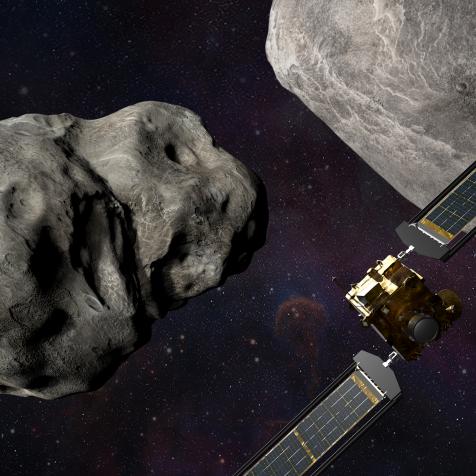
Watch NASA's Asteroid-Crashing DART Mission Make Impact
NASA sent a spacecraft on a mission to crash into an asteroid, so how did it go?
Updated 9/26/22
NASA's highly anticipated DART, the Double Asteroid Redirection Test, has reached the final leg of its journey: to make the first attempt in altering the course of an asteroid by intentionally crashing a spacecraft into it. After years of careful planning, the mission has culminated in a smashing success.
DART made contact with the asteroid moon Dimorphos at 7:14 p.m. EDT on Monday, Sept 26, 2022.
Look back at this first-ever mission dedicated to investigating and demonstrating asteroid deflection by changing an asteroid's orbit in space
Moments from Asteroid Impact LIVE: DART Mission
The direct hit marks the successful completion of the first part of the first planetary defense mission. Now, scientists will begin to take new measurements of the asteroid's orbit and will report on the results in the coming weeks.
NASA is Shooting a Rocket at an Asteroid and We Don’t Want to Miss It 10 Photos
DART, or Double Asteroid Redirection Test, is a mission to test NASA's asteroid deflection technology should the need ever arise. In the first-ever space mission of its kind, the spacecraft will launch on the SpaceX Falcon 9 Rocket out of Vandenberg Space Force Base in California.Go behind the scenes of the making of DART with our favorite photos.
This mission, which launched in November 2021, is a test to measure our options in defending Earth against an asteroid impact. Although we won't be able to see the explosive event without a telescope, DART will be sending back images once every second as it reaches Dimorphus, including up to the point of impact.
NASA's DART Mission, built and managed for NASA by the Johns Hopkins Applied Physics Laboratory, is humanity's first attempt to change the motion of an asteroid in space by intentionally crashing a spacecraft into it. DART's target asteroid is not a threat to Earth. However, it is the perfect testing ground to see if this method of asteroid deflection - known as the kinetic impactor technique - would be a viable way to protect our planet if an asteroid on a collision course with Earth were discovered in the future.
Audiences can join the conversation on social media by using #AsteroidImpactLIVE and following @Discovery and @ScienceChannel on TikTok, Facebook, Twitter, and Instagram.



















